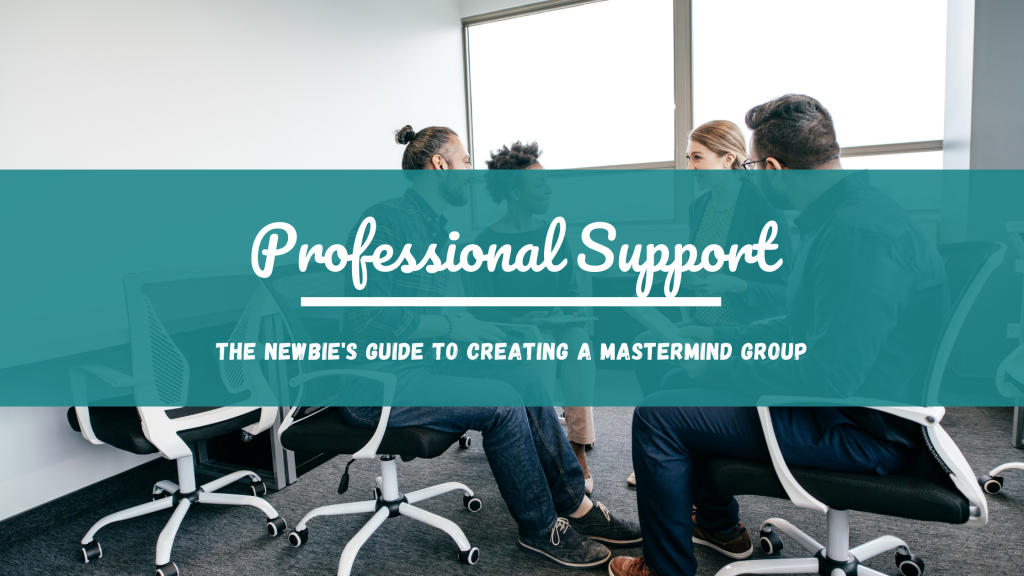
Who Should You Choose to Be in a Mastermind Group?
A mastermind group needs people, but they must be the right kind of people. You want your ideal peers to be in there with you. It can be a group as small as three people, or as large as you can manage.
You want to first find others who are just as committed to business success as you are. Someone who’s playing around, or who started a business because they didn’t have anything better to do with their time isn’t someone who’s going to stick with it for the long run.
You want someone who’s going to be present. When you have a meeting, you want these people there. Those in a mastermind group need to be givers as well as receivers.
You don’t want to fill the group with people who love to focus on taking and have an “I” problem. A mastermind group shouldn’t be filled with people who selfishly focus on their own needs and rarely if ever help the other members.
Choose people who give back to the group and avoid the ones who feel like the group should always be centered on themselves or their needs. Every mastermind group needs a set of rules to follow for the best possible success of everyone there.
That means that some people should not be allowed in. Everyone knows someone who believes that rules don’t apply to them. So they may act in a way that’s obnoxious or selfish.
You don’t want your mastermind group to always be dealing with chaos or someone who seems to get a kick out of offending others – or who thinks they need to be brutal and unkind with their advice or feedback.
Don’t be afraid to uninvite someone to the group if they join and you notice that they’re bringing down the atmosphere. Maybe they’re constantly complaining, or they want to bicker.
Remember that it’s your community and you have to protect it as the leader. Other people you’ll want to include in your group should be considered according to what they know.
This ensures that everyone will be able to receive some kind of value from being a member. They don’t have to all be alike, but if you have someone who has a high level of experience running an online business and everyone else in the group has no experience at all, then the value won’t be equal.
When picking the members who will be in your group, you’re going to want to look at the kinds of skills they have that will make them a valuable addition to the group. You can look for people who have knowledge in areas that you may be lacking so that you’ll be able to learn, too.
For example, if you know that you’re going to be running ads but you have zero experience with that, then it would be in your best interest to add someone who has a lot of knowledge in this area.
When running an online business, it’s a given that you’ll be using social media. Add people to your group who have knowledge of the various types of social media and you can all learn from each other.
You might have someone who is good at launching products, another who excels at networking, one who creates amazing graphics or content, and another who hits it out of the ballpark with SEO (search engine optimization).
By curating a member list of people who have a variety of skills and talents, you’ll ensure that everyone can contribute something and that members will be receiving a well-rounded boost of insight and assistance on a regular basis.
Setting an Agenda and Schedule for Your Group Meetings
Once you’ve created your mastermind group, which can be on a social site or elsewhere, you’ll want to settle on your agenda and then make a schedule for the meetings.
There are a lot of different avenues you can take for this. Some groups operate by a round table discussion style. This is when you come to the meeting and you bring up a discussion topic.
Or, you have something that you’ve already decided on before the meeting starts that you want to bring to the table. This way of handling the meetings can lead to a lot of deep conversations or personal insight, which can be a good thing.
But on the other hand, using this kind of format can make it easy to get off topic if you’re not guiding the conversation. Members with a strong personality can tend to take over this type of meeting and run the show unless you handle it.
Some mastermind groups can be run on a very structured format where an agenda is brought up. For example, the first five minutes can be the check in time. This is when you note who’s there.
But you also take this time to see where everyone stands. This could mean discovering what the person had happen since the last meeting. If someone was going to start a new social media account to build followers, then you might check in with that person to see how it went.
The next step in a more structured meeting is the accountability time. This is when you see if those who had a goal or some action steps in mind followed through on their plans.
If not, you then discuss a review of their goals. You can also bring up the problems that were encountered and what happened in dealing with those. This time can help you track where members are, but can also help you to be able to spot members who may need more help.
Then, in this type of meeting, you would close with their goals planned before the next meeting. You’ll want to create a schedule for the meetings. You can pick a certain day of the week, but you’ll have to take into consideration the schedules of the majority of the members.
For example, if your mastermind is made up of parents, then there will be certain times of the day (such as when it’s time to pick up the kids from school) that these members won’t be available.
Members might also be in different time zones or countries, so you’ll have to work around schedules. What some groups do is they record each session via video so that members who can’t attend that day can still watch the replay and gain insight or get information this way.

